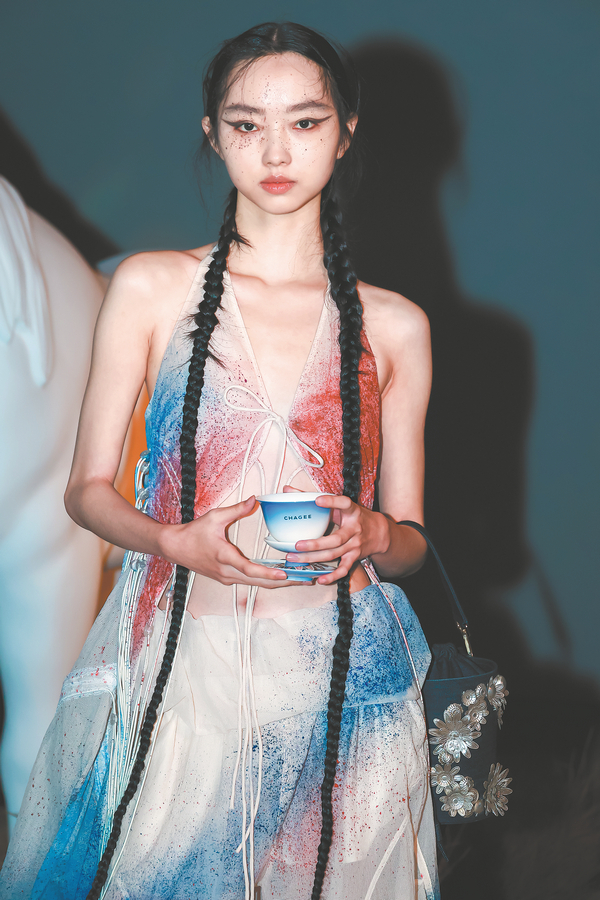

Meet the latest catwalk trend in the ongoing fashion week in Shanghai — xinzhongshi — the new Chinese style.
The style of clothing is typically defined as seamlessly integrating traditional Chinese elements with modern designs.
But as this fusion of traditional Chinese culture becomes increasingly popular, it is gradually prompting the industry to reflect, challenging the industry's transformation, and seeking new solutions to ensure its sustainability.
During the 2025 Spring/Summer Shanghai Fashion Week, xinzhongshi shows were a dominant factor. On Tuesday, emerging fashion designer Chen Anqi, in collaboration with the tea brand Chagee, elevated the popularity of the new Chinese style through a cross-border fusion on the runway that blends traditional ethnic crafts and nomadic styles.
"I believe that China is a magnificent fusion of diverse cultures. In my eyes, the new Chinese style embodies the beauty of the nation and the world. It represents beauty in sharing, with a variety of possibilities. When we work on the new Chinese style, we explore more nomadic and primitive elements," says Chen, founder of fashion brand Angel Chen.
In addition, Hemu, a brand known for giving contemporary twists to traditional Chinese patterns, adopts intangible cultural heritage materials such as Yunjin brocade in its designs. It also utilizes traditional dyeing techniques and combines various embroidery methods.
This season, Hemu draws inspiration from ancient Liangzhu culture, an important Neolithic culture from 5,300 to 4,300 years ago in the Yangtze River Delta. Alongside earth tones and the elegant colors of jade as the primary color palette, a hint of red is added to pay tribute to the ancestral lacquer craftsmanship.
"My designs have drawn inspiration from the Northern Wei Dynasty (386-534) and the Song Dynasty (960-1127), but how to present a civilization from 5,000 years ago and integrate it into contemporary aesthetics is something we have always been contemplating," says Yang Fengrui, the founder and artistic director of Hemu.
Goldlion 3388, a fashion and lifestyle brand under the Hong Kong-listed Goldlion Group, derives inspiration from traditional Chinese architecture and landscape paintings. These include the iconic "gold" rivet elements inspired by the auspicious details commonly found in Chinese architecture, as well as printed patterns incorporating unique Eastern style, interpreting garden landscapes with designs.